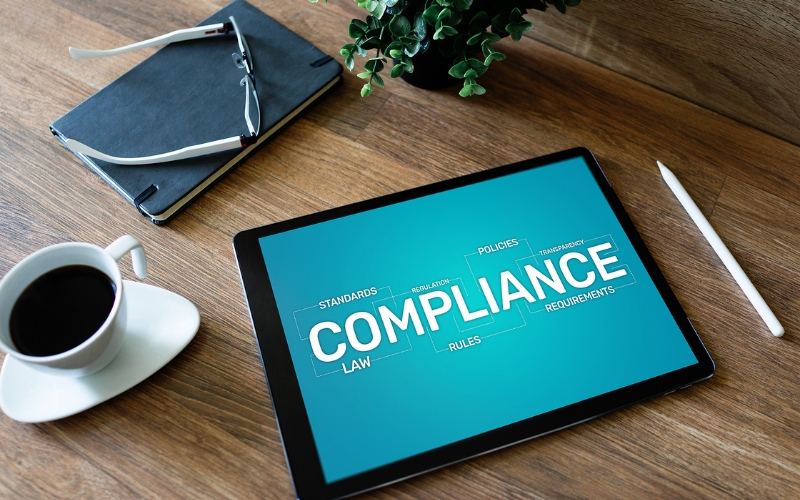Temporary Employees and Paid Sick Leave
Posted on May 25th, 2016 Read time: 2 minutes
By Katherine Duru
Amid the patchwork of federal, state and local laws, there are an increasing number aimed at providing some paid sick leave for all employees. High profile outbreaks of communicable infections such as norovirus have convinced lawmakers that it is in public health interest to allow workers, especially those in food service, to have some continuity of income in the event of an illness. The thought is that sick workers who have accrued some leave time will be less likely to come to work and thus infect coworkers and the public. These paid sick leave laws apply not only to full time employees, but also the contingent workforce, working through payrolling services, HR outsourcing services, and temporary staffing firms.
Each municipality has a different flavor of paid sick leave, but typically they are hours worked based, with the most common accrual being 1 hour accrued for every 30 hours worked. Other variables include the waiting period before paid sick leave begins accruing, the maximum hours that can be accrued in a year, the maximum hours that can be used in a year, and how much of the unused balance can be rolled forward to the following year. There are also various rules about how long a break in service may be before the balance is zeroed out.
Although the details of the rules vary, what is common to all of the plans is that all W2 employees regardless of whether they are part time or full time, direct hire, contingent, temporary, or payrolled, are eligible. Most also include a requirement that the employee be notified at the time of hire of the details of the accrual rules, and be afforded a means of checking their accrued hours on their paystub.
There are also strict laws regarding retaliation for employees taking their accrued paid sick leave. Employers should take extra care in documenting the reasons for any adverse action taken in the month following an employee taking paid sick leave. This is true not only for direct hire staff but also the contingent workforce. This can pose issues in the event of a short term assignment, during which an employee is out on sick leave. Both the client company and the HR outsourcing firm should take care to ensure that the employee has the same or a comparable position to return to.
There is a great deal of confusion about what proof an employee must provide that they were actually sick. In short, employers are wise to take employees at their word, including their contingent workforce. It can be tempting to require a doctor’s note for even short illnesses, especially if the employer suspects that the time off was not for a legitimate illness. However, any policy about doctor’s notes must be applied evenly to all employees and it places an undue burden and expense to require that an employee pay for a doctor’s visit for a short illness such as a cold. In the same vein, it is prudent to pay any accrued and used time, even if the employee needs a “mental health day”.
In a recent poll taken of HR outsourcing firms, a majority of respondents look forward to a time when there is a federal standard for paid sick leave, applying nationwide. Until that time, payrolling services and employer of record service providers are wise to keep a sharp eye for new paid sick leave regulations in order to remain in compliance.
Related Articles
Posted on May 25th, 2016 Read time: 2 minutes
By Katherine Duru
Amid the patchwork of federal, state and local laws, there are an increasing number aimed at providing some paid sick leave for all employees. High profile outbreaks of communicable infections such as norovirus have convinced lawmakers that it is in public health interest to allow workers, especially those in food service, to have some continuity of income in the event of an illness. The thought is that sick workers who have accrued some leave time will be less likely to come to work and thus infect coworkers and the public. These paid sick leave laws apply not only to full time employees, but also the contingent workforce, working through payrolling services, HR outsourcing services, and temporary staffing firms.
Each municipality has a different flavor of paid sick leave, but typically they are hours worked based, with the most common accrual being 1 hour accrued for every 30 hours worked. Other variables include the waiting period before paid sick leave begins accruing, the maximum hours that can be accrued in a year, the maximum hours that can be used in a year, and how much of the unused balance can be rolled forward to the following year. There are also various rules about how long a break in service may be before the balance is zeroed out.
Although the details of the rules vary, what is common to all of the plans is that all W2 employees regardless of whether they are part time or full time, direct hire, contingent, temporary, or payrolled, are eligible. Most also include a requirement that the employee be notified at the time of hire of the details of the accrual rules, and be afforded a means of checking their accrued hours on their paystub.
There are also strict laws regarding retaliation for employees taking their accrued paid sick leave. Employers should take extra care in documenting the reasons for any adverse action taken in the month following an employee taking paid sick leave. This is true not only for direct hire staff but also the contingent workforce. This can pose issues in the event of a short term assignment, during which an employee is out on sick leave. Both the client company and the HR outsourcing firm should take care to ensure that the employee has the same or a comparable position to return to.
There is a great deal of confusion about what proof an employee must provide that they were actually sick. In short, employers are wise to take employees at their word, including their contingent workforce. It can be tempting to require a doctor’s note for even short illnesses, especially if the employer suspects that the time off was not for a legitimate illness. However, any policy about doctor’s notes must be applied evenly to all employees and it places an undue burden and expense to require that an employee pay for a doctor’s visit for a short illness such as a cold. In the same vein, it is prudent to pay any accrued and used time, even if the employee needs a “mental health day”.
In a recent poll taken of HR outsourcing firms, a majority of respondents look forward to a time when there is a federal standard for paid sick leave, applying nationwide. Until that time, payrolling services and employer of record service providers are wise to keep a sharp eye for new paid sick leave regulations in order to remain in compliance.






